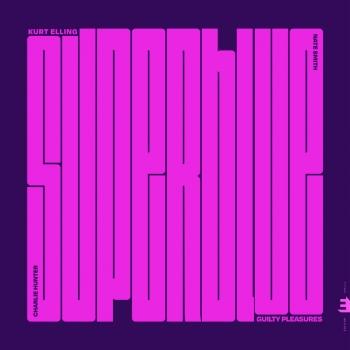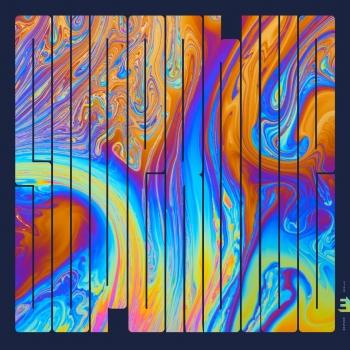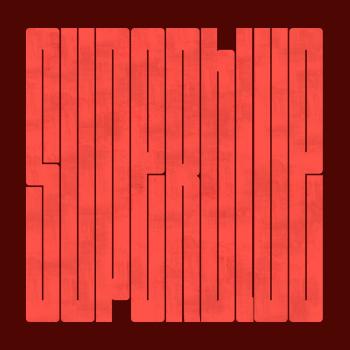Kurt Elling & Charlie Hunter
Biography Kurt Elling & Charlie Hunter
Kurt Elling
Renowned for his singular combination of robust swing and poetic insight, two-time GRAMMY winner Kurt Elling has secured his place among the world’s foremost jazz vocalists. The New York Times proclaimed Elling, “the standout male vocalist of our time”. Over a twenty-five year career of touring and recording, Elling has won three Prix du Jazz Vocal (France), two German Echo Awards, two Dutch Edison Awards, and has been nominated for a GRAMMY award fifteen times. He has had a 14-year run atop the DownBeat Critics and Readers polls, and has won twelve Jazz Journalists Awards for “Male Vocalist of the Year”.
Kurt Elling’s voice is instantly recognizable, embracing listeners with his warm, rich baritone and navigating the full span of his four-octave range as a virtuoso improvisor and a compelling storyteller. The Guardian (UK) has named Kurt Elling, “a kind of Sinatra with superpowers,” and, “one of jazz’s all-time great vocalists.”
Elling has recorded and toured with Branford Marsalis, Danilo Perez, Stefon Harris, Fred Hersch, James Morrison, and Charlie Hunter. He has performed extensively with larger ensembles like The Clayton/Hamilton Orchestra, The National Youth Orchestra (led by Sean Jones), The Bob Mintzer Big Band, The BBC Concert Symphony (led by Guy Barker) The Metropole Orchestra (Holland), The Irish Radio and Television Orchestra (led by Brian Byrne), The Scottish National Jazz Orchestra, and The WDR Orchestra and Big Band (Germany).
The Wall Street Journal said, “Elling combines authenticity with stunning originality.” The Washington Post declared that, “since the mid-1990s, no singer in jazz has been as daring, dynamic or interesting as Kurt Elling.”
Elling’s dynamism is enhanced exponentially by the fact that he consistently generates new vocal material by writing and recording signature and definitive lyrics to the compositions of foundational jazz composers like John Coltrane, Keith Jarrett, Pat Metheny, Jaco Pastorius, Wayne Shorter, and Joe Zawinul. Additionally, Kurt Elling has co-created multi-disciplinary performances for Chicago’s Steppenwolf Theater and The City of Chicago. Jazz At Lincoln Center saw the world premier of The Big Blind, an entirely new jazz musical-in-progress Elling is co-writing with collaborator Phil Galdston (“Save The Best For Last”). National Poet Laureate Robert Pinsky declared that, “In Kurt Elling’s art, the voice of jazz gives new spiritual presence to the ancient, sweet and powerful bond between poetry and music.”
Elling has toured the world in a variety of contexts, including UNESCO-sponsored “International Jazz Day” performances in Havana, Cuba, in St. Petersburg, Russia, in Melbourne, Australia and in Washington DC. He has twice performed at the White House, including a performance in collaboration with the late Marvin Hamlisch and the National Symphony Orchestra for President Obama’s first State Dinner. He has served as Artist-In-Residence at the Monterey and Singapore Jazz Festivals. As a music industry leader, Elling spent six years serving as a Trustee and two years as Vice Chairman of The National Academy of Recording Arts and Sciences.
Charlie Hunter
As a young guitarist growing up in the San Francisco Bay Area, Charlie Hunter was looking for a way to stand out in the ’80s. His primary influences were jazz great Joe Pass and the fluid Tuck Andress (of the guitar/vocal duo Tuck & Patti), both six-string guitarists who were adept at blending bass notes into their standard guitar melodies to make themselves sound like two musicians at once. But Hunter wanted to take it one step further, and set out to find an instrument on which he could simultaneously function as both a guitarist and a bassist. For his self-titled 1993 debut CD, Hunter played a seven-string guitar for the duality effect, locking down the bottom with drummer Jay Lane and mixing melodically with saxophonist David Ellis. But on his trio’s 1995 sophomore release, Bing, Bing, Bing!, Hunter unveiled his custom-made Novax eight-string, the guitar that finally allowed him to realize his capacity. Designed by Ralph Novak, the instrument featured special frets and separate signals for its guitar and bass portions. Picking bass notes with his right thumb while fretting them with his left index finger (while at the same time fingerpicking guitar chords and single notes with his right hand’s remaining four digits as he frets with his left hand’s other three fingers), Hunter achieves the real sound of two-for-one.
Hunter played with the side group T.J. Kirk in the mid-’90s, a band that derived their name from the cover material they exclusively played: Thelonious Monk, James Brown, and Rahsaan Roland Kirk. Initially wanting to call themselves James T. Kirk before being threatened by the Star Trek TV and film series, T.J. Kirk released a self-titled 1995 debut and the 1996 follow-up, If Four Was One, before disbanding. Hunter took drummer Scott Amendola with him for his next project, an ambitious instrumental remake of Bob Marley’s Natty Dread album in its entirety. Also featuring saxophonists Kenny Brooks and Calder Spanier, the 1997 release beat the odds by becoming arguably Hunter’s best album. After Spanier died from injuries sustained from being hit by a car, Hunter moved east to New York, taking Amendola with him. Teaming with vibraphonist Stefon Harris and percussionist John Santos, Charlie Hunter & Pound for Pound’s 1998 CD Return of the Candyman is dedicated to Spanier. A departure from Natty Dread, mainly due to the work of Harris, the disc featured a vibes-heavy cover of Steve Miller’s “Fly Like an Eagle.”
Hunter’s modus operandi had now become shifting personnel changes, and in between tours he recorded a 1999 duo CD with drummer/percussionist Leon Parker and a self-titled 2000 CD that featured Parker and an otherwise ensemble cast. Hunter also contributed greatly to the 2000 comeback CD by drummer Mike Clark, Actual Proof. Hunter concluded his run at Blue Note with 2001’s Songs from the Analog Playground, which saw him collaborating with vocalists for the first time, ranging from labelmates Norah Jones and Kurt Elling to Mos Def. 2003 found Hunter with a new label (Ropeadope) and two new bands (the Charlie Hunter Quintet) on Right Now Move, and the beginning of Groundtruther, a partnership with percussionist/composer Bobby Previte. They released Come in Red Dog, This Is Tango Leader before adopting the Groundtruther moniker. For 2003’s Friends Seen and Unseen, it was back to the Charlie Hunter Trio, with drummer Derrek Phillips and saxman John Ellis, both members of the Quintet. By now, Groundtruther had taken on a life of its own, with Hunter and Previte joined by a rotating third member. Latitude was first, in 2004 with saxophonist Greg Osby, followed by Longitude with DJ Logic in 2005.
In 2006, the Charlie Hunter Trio resurfaced with Copperopolis and almost immediately announced that it was disbanding as Ellis wanted to further pursue a solo career. What to do? Form another trio! After recruiting Erik Deutsch on keys and Simon Lott on drums, they released Mistico in the summer of 2007, Hunter’s first album for Fantasy. ~ Bill Meredith & Sean Westergaard













